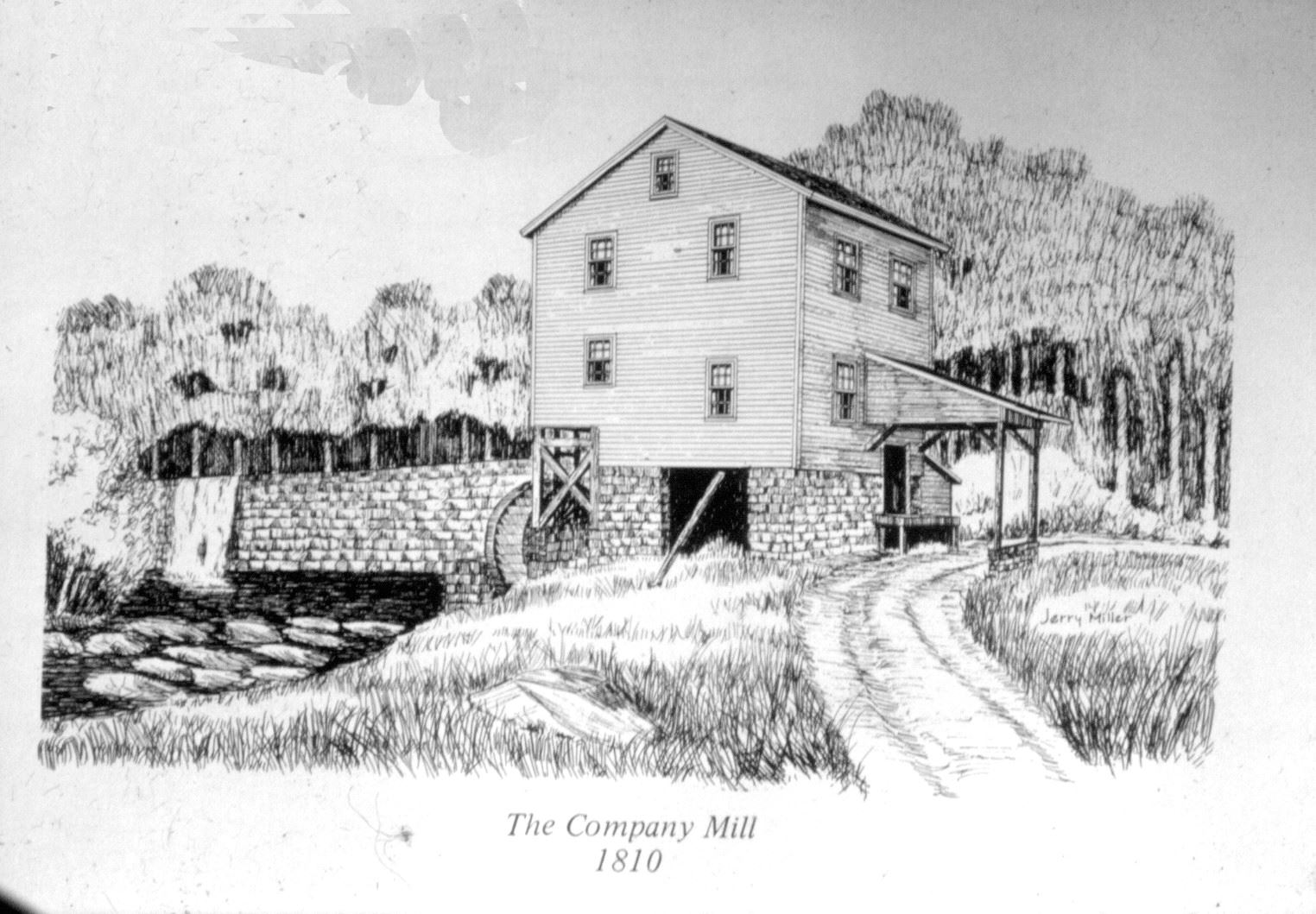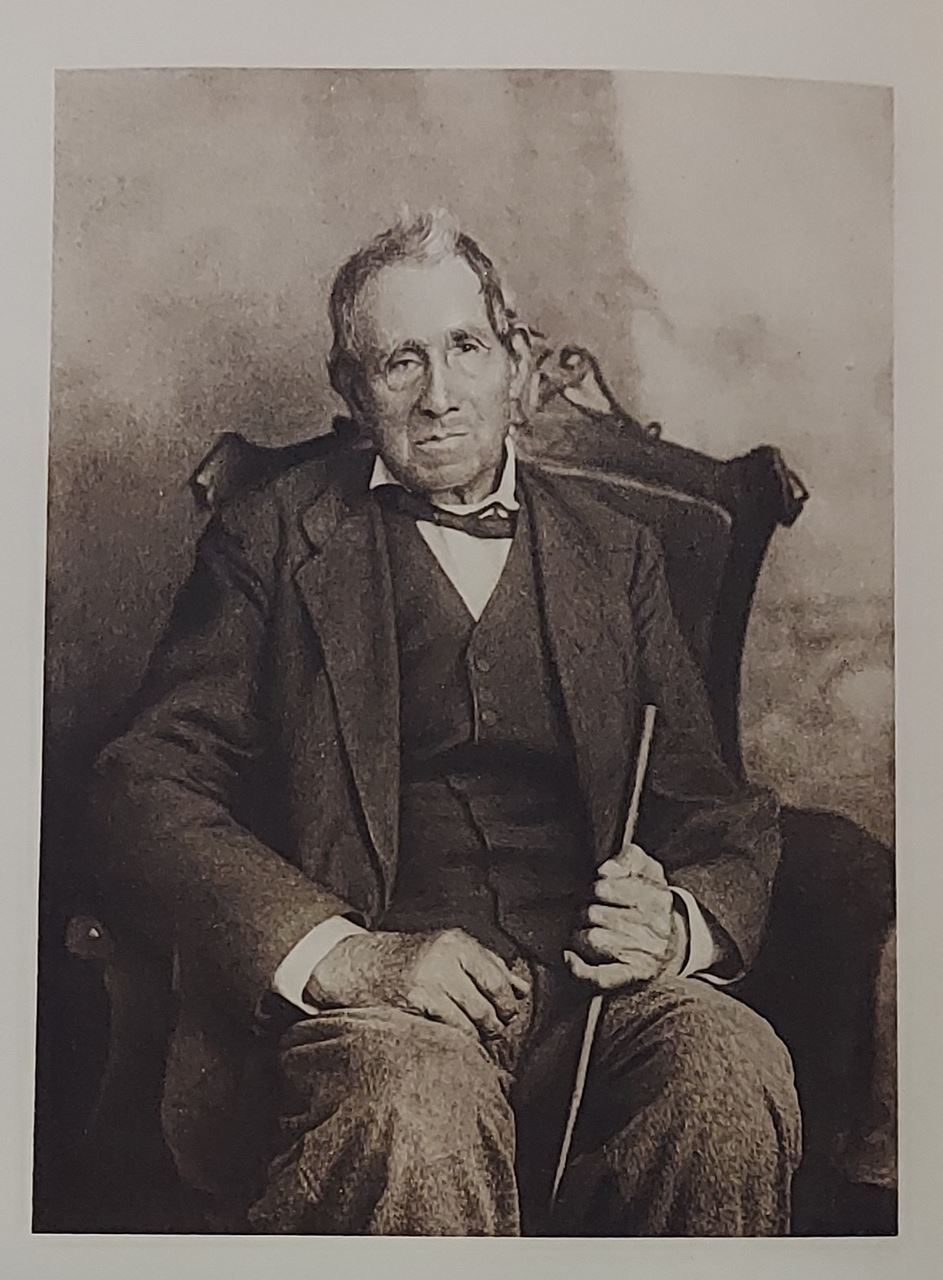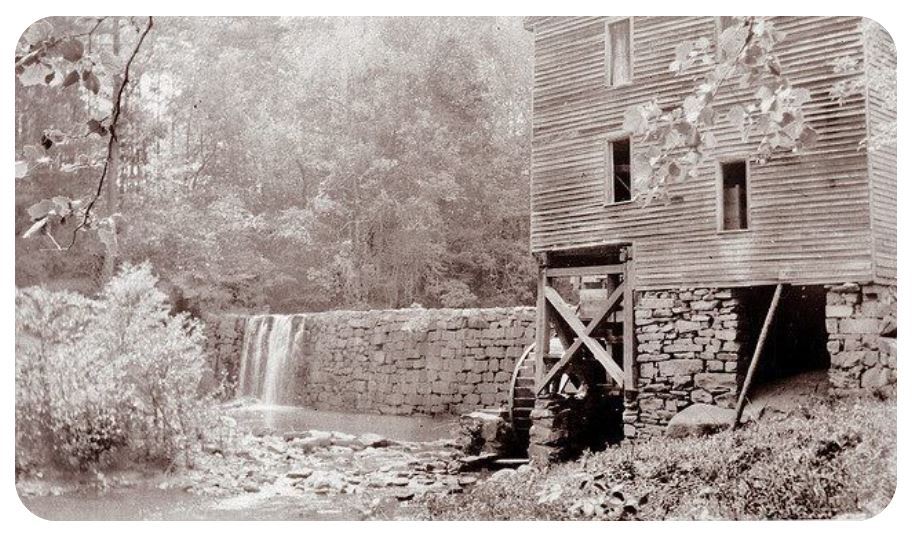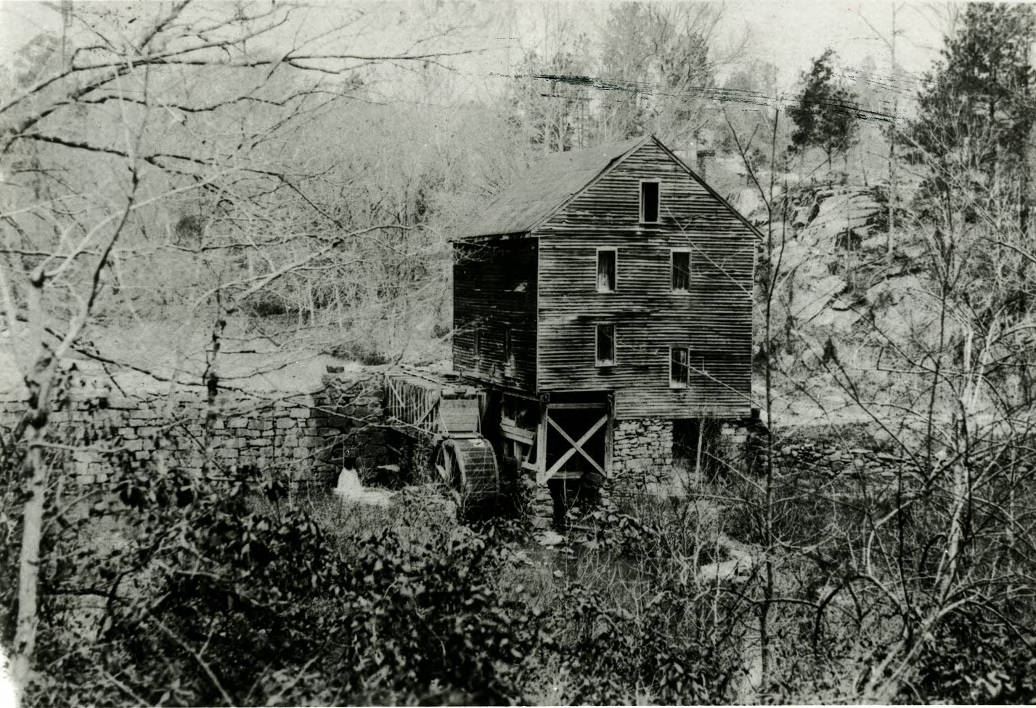Around 1810, Lewis Page sold a few acres of land along Crabtree Creek to his 20 year old son, Anderson. Anderson proceeded to build a grist mill on the creek a few miles north of what would one day become Cary. The Mill was built with hand hewn lumber and pegs. Called the Page Mill, it stood as a working mill until the 1920s before being mostly washed away by flooding in the 1930s.

Anderson's son, Frank Page, would go on to found the town of Cary in 1871.
Anderson ran the mill himself until around 1847 when he sold his interests in the mill to his brother, Williamson, and two other men. They renamed it The Company Mill.
 Anderson Page, Circa 1884
Anderson Page, Circa 1884
For generations, the Mill stood as a focal point for the Cedar Forks community. There were two other grist mills in what would eventually become Umstead State Park, but the Company Mill was the biggest. At its peak around the turn of the century, over 40 families lived around the Mill and used it for grinding their home grown corn and wheat, both for personal use and for business use.
It was said that the Mill produced the finest quality of flour from any mill in the area. Commercially, mule drawn wagons brought sacks of corn and wheat to the mill to be ground. Two roads led to the Mill, one from the north and one from the south. By the 1920s, some folks were even driving their trucks to the Mill to have grain ground. Remnants of the southern road are still visible when viewed from the north bank of the Mill site. There was a wooden footbridge that cross Crabtree creek just downstream from the Mill, but it was not rebuilt when it washed away in the 1920s.
 View of the Mill from the Southern Bank of Crabtree Creek
View of the Mill from the Southern Bank of Crabtree Creek
The Grissom Family was the last one to operate the mill, well into the 1920s. Their homesite was just up hill on the north bank of Crabtree Creek. Joe Grissom has told the story of how it was a steep walk down and back to the mill to get freshly ground corn, but how he liked doing it in the winter. The freshly ground corn was warm, so he would tuck the bag of corn flour under his shirt and it would keep him warm on the walk back home.
Crabtree Creek was much higher back when the Mill was operating. The dam wall was over 15 feet high and created a sizeable mill pond. The pond was used as a local swimming hole and boating pond for folks in the summer.
The Mill itself not only served the surrounding community as a mill, but was also often the center of social activities. There are plenty of accounts of dances and other types of events being held at the Company Mill.
By the turn of the century, folks were coming from as far away as Durham to swim and boat in the mill pond, have picnics on the shores and attend other social events. The Mill was three stories tall, with the bottom story containing the mechanical parts of the Mill, while the middle story was an open room where the dances and parties were held.
 View of the Mill from the Northern Bank of Crabtree Creek
View of the Mill from the Northern Bank of Crabtree Creek
Even after the Mill closed in the 1920s, people would continue to come to the Mill site to enjoy the Millpond for picnics and boating. By the mid 1930s, it was common to see over 100 cars parked along the road there on a Sunday afternoon. That lasted until the the great flood broke the dam wall and destroyed the mill. It was about this same time that the Resettlement Administration was buying up land from farmers facing ruin and there was a mass exodus of people moving out of the Cedar Fork Township. The RA purchased a lot of the land that would make up Umstead, enlisted the help of the Civilian Conservation Corp (CCC) and the Works Progress Administration (WPA) and went about creating Crabtree Creek State Park, which would eventually be renamed for William B. Umstead as Umstead State Park.
